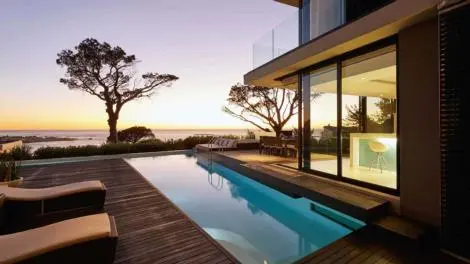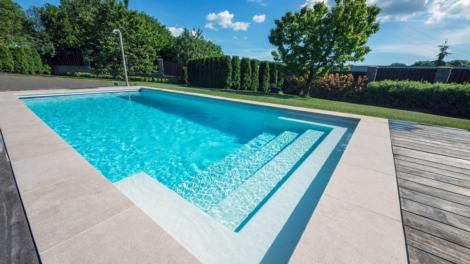Lap pools are ideal for working out your muscles, and you want to ensure the new pool you install is a perfect size.
Many homeowners desire a swimming pool to have some privacy in their backyard besides exercising. These lap pools deliver an exquisite look to a narrow yard, especially when viewed through the house. And with residential plots getting smaller, their popularity has increased more than ever.
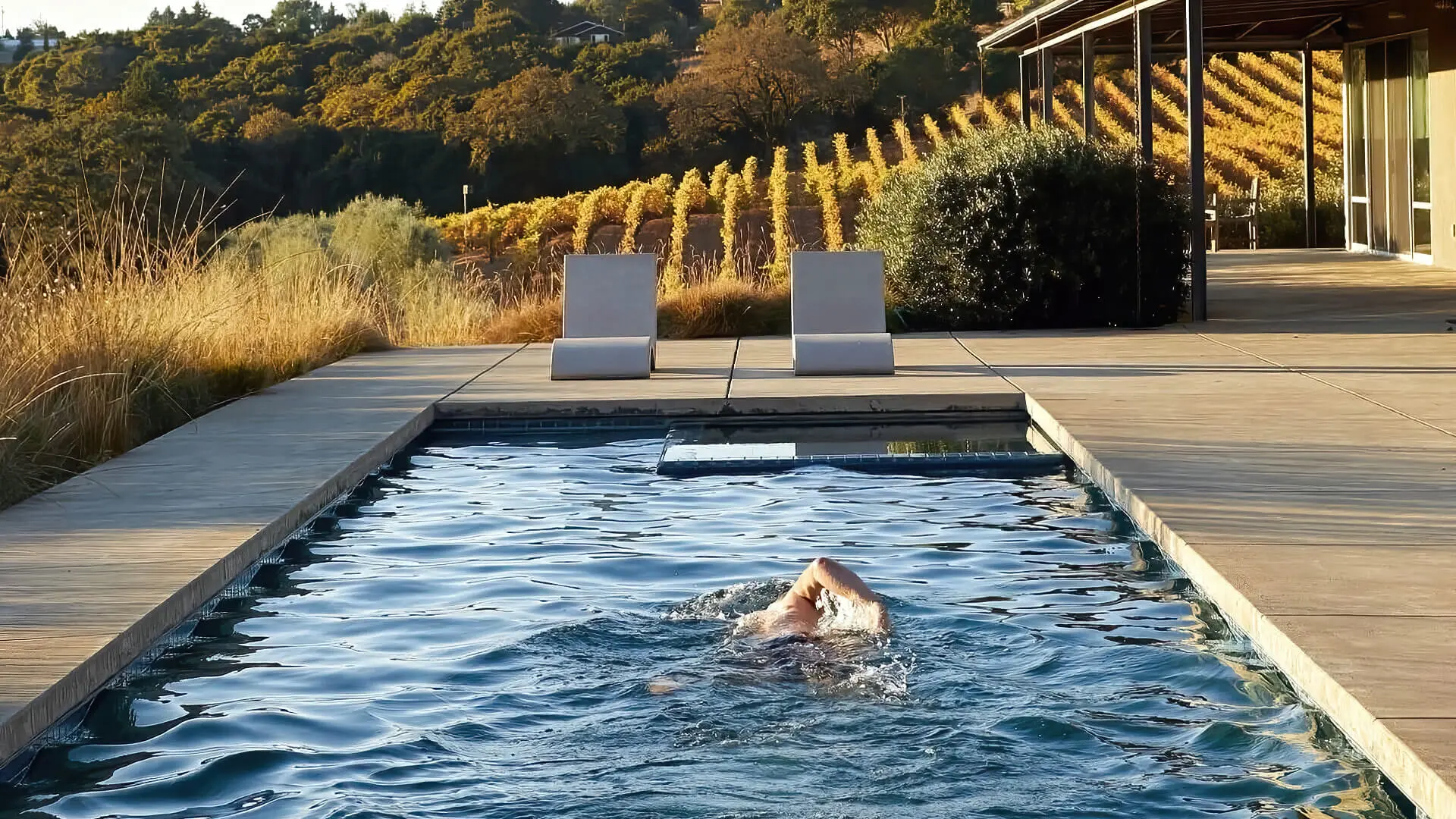
When you’re planning to build a lap pool in your backyard, you must consider its ideal sizes and other factors. In this informational guide, we will discuss each of them in detail so that you can have the pool of your dreams.
Without further ado, let’s dive in by answering how long a lap pool is.
What Is A Lap Pool Anyway?
Lap pools are narrow, long, rectangular swimming pools installed primarily in the ground but can also be built above ground. As the name suggests, they are designed for swimming laps and must be longer.
The length of a lap pool is generally 40 feet, but it can reach up to 75 feet, and the width usually varies between 6 and 10 feet. Experts reveal that the lap pool needs a minimum depth of 3-½ feet so swimmers’ feet and hands don’t touch the ground. And if you flip turns at the end of each lap like an Olympic swimmer, the depth should be at least 4 feet.
While you can utilise them for recreational purposes and family playtime, they are not equipped with the features of traditional in-ground pools. Plus, they won’t have a broad set of steps or shallow end for kids to jump around- there might be some narrow ladders for a swimmer to get in and out.
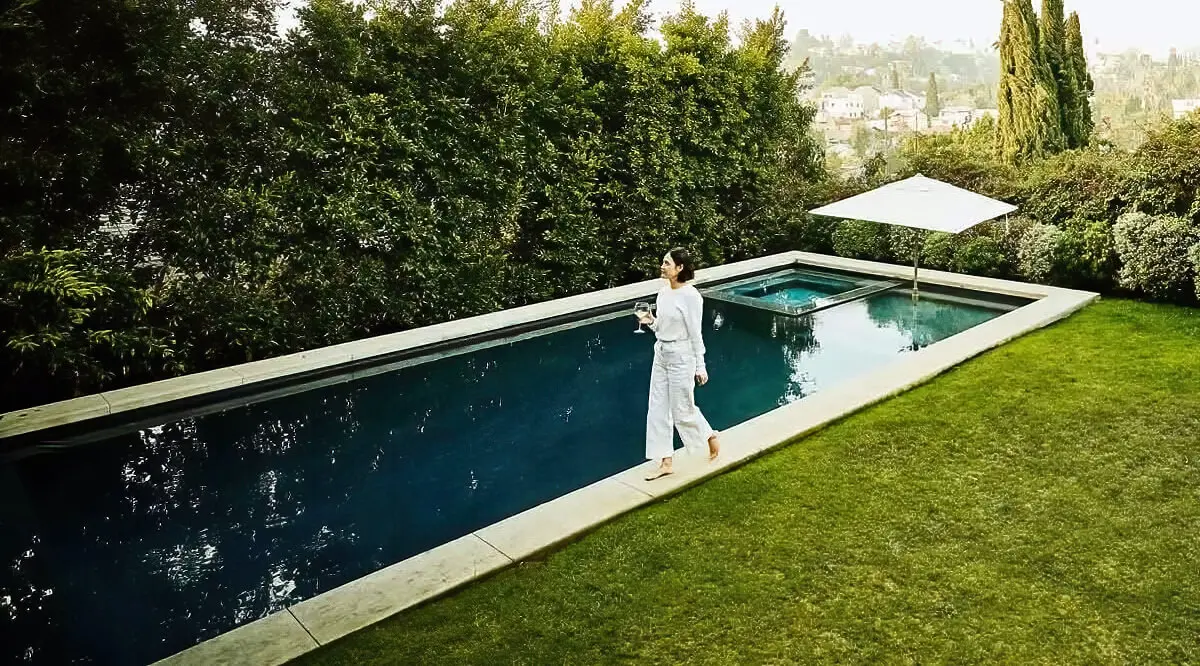
Early Designs Of Lap Pools
Ancient Romans and Greeks built rectangular-shaped pools for nautical games, athletic training and military exercises. However, Russian emperors built private pools, known as piscinas, to breed fish.
While pools served several purposes for different civilisations, Cleo Baldon designed lap pools in 1970. Her designs changed the fitness scene, and people started using lap pools for training and exercising.
What Is Baldon’s Design?
Baldon’s innovative design for domestic lap pools draws inspiration from her homeland’s long, narrow irrigation trenches. Despite her mother’s concerns, these early experiences with water shaped her unique approach to modern pool design. Designed typically with a maximum width of 8-9 feet and a minimum length of 45 feet, these pools are ideal for executing a variety of swimming strokes, allowing swimmers to stretch out their arms and legs comfortably.
For children, the optimal dimensions of lap pools are smaller, typically 3 feet in depth, 4 feet in width, and 5 feet in length. These dimensions provide a safe and effective environment for kids to begin their swimming training. Not only is this size adequate for learning, but it also ensures their safety in the water.
The maintenance of these pools is similar to that of concrete pools and other traditional pools. However, one can transform a lap pool into a dynamic training environment by installing a machine that generates an artificial current. This addition turns a simple lap pool into a spool, enhancing a swimmer’s training by providing resistance. This feature is particularly beneficial for improving stroke technique and overall muscle toning.
Additionally, while most lap pools are in-ground, incorporating an above-ground pool design can offer flexibility and potentially lower costs. The pool floor in these setups should be smooth and even to ensure safety and performance during swimming.
What To Consider Before Building A Lap Pool?
It would be best if you considered a few important factors before building a lap pool, which include:
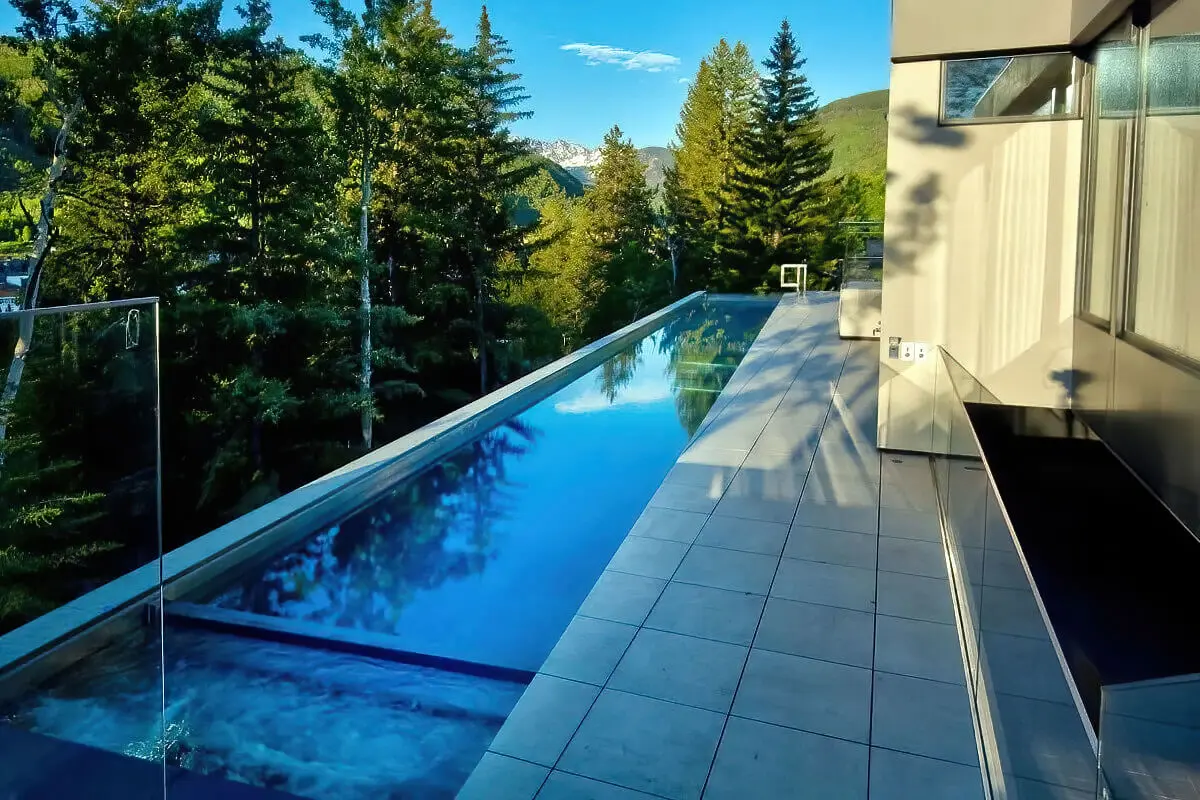
A. If It’s Being Built For Swim Laps
If you use your lap pool only for swim laps, having narrow stairs to get inside the pool is convenient.
B. Extra Features
If your lap pool has adequate room, you can consider making some additions. For example, you can add an integrated spa for a more wholesome experience. Besides, having a hot tub in your backyard can let you relax after a hard day at work.
C. The Pool Design
It’s also crucial that your lap pool looks good, so designing the deck surround will be good. You can use materials like concrete, wood, tile, or paving.
Any swimming pool needs a standard width of 4-8 feet along the sides. This helps keep debris out of the water, permits easy access, ensures water doesn’t splash out, and ensures you won’t have to break a sweat to maintain it.
Also, decide what purpose you will use the lap pool for and when to use it (day or night), as this will help you figure out if it needs a heating unit.
Designing Your Lap Pool
Once your lap pool is installed, you must maintain and clean it regularly. You can use a hand vacuum or a robot pool cleaner or hire a professional pool builder to do it for you. The latter can be costly, but you can’t afford health issues due to the dirty pool water.
Also, we’d like to mention that the cost involved in installing a lap pool is almost similar to a traditional in-ground pool. Like traditional pools, the final price may vary depending on the pool material used. Concrete is the most expensive option, while vinyl is the most affordable.
Whether you need to install, maintain or renovate a lap pool in Sydney, we are here. With years of experience, we design and build modern, stylish, and functional pools, swim spas, and fences. We would be excited to assist you with this new adventure, so contact us today!
That’s it for today. Keep a watch on this space for more informative content. Bye!
